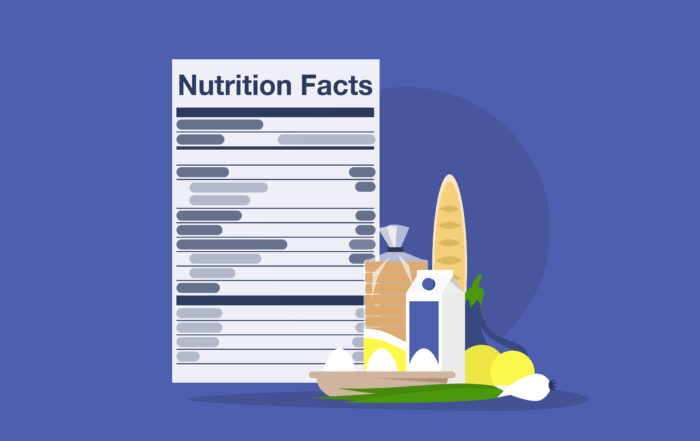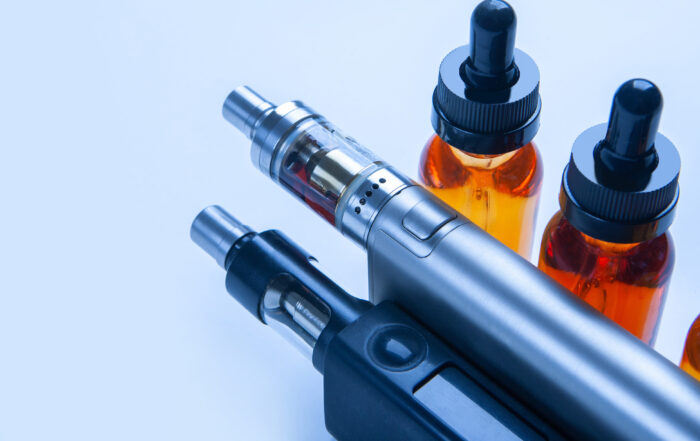
Biosimilar Strength vs. Potency: Avoiding a Regulatory Hobson’s Choice
Introduction
The U.S. Food and Drug Administration’s (FDA) current interpretation of “strength” does not allow a biological product to be licensed as a biosimilar and/or interchangeable product if there is any variation in inactive drug volume, even if it has the same amount of active drug content as the reference product.[1] This article discusses challenges in reconciling this new thinking with the agency’s stated views relative to biosimilar regulation and the generally accepted “totality of evidence” standard as discussed in the agency’s guidance document, “Scientific Considerations in Demonstrating Biosimilarity to a Reference Product.”[2] This contrast between strength, on the one hand, and potency (clinical function), on the other, is also important to consider relative to the implications of the intent of the Biologics Price Competition and Innovation Act of 2009 (BPCIA)—and how existing legislative ambiguities can be addressed and amended.
A Very Short History of the Biologics Price Competition and Innovation Act
The Biologics Price Competition and Innovation Act of 2009 (BPCIA) gave FDA authority to create a regulatory pathway for “biosimilar” biological products. The BPCIA amended the Public Health Service (PHS) Act to create an abbreviated approval pathway for biological products shown to be biosimilar to, or interchangeable with, an FDA-licensed reference biological product.
The development of this legislation included many different legislative iterations and scientific approaches. Two key issues, however, laid the groundwork for final passage: 1) that the intent of the legislation was to expedite the introduction of biosimilars into the U.S. market in order to expand patient access to lower cost, safe, and effective biologics; and 2) to maintain FDA’s regulatory flexibility in determining the scientific “rules of the road.” As Dr. Jay Siegel (former Office Director, Office of Drug Evaluation Sciences at FDA) commented at a March 8, 2007 hearing of the Senate Health, Education, Labor and Pensions (HELP) Committee, “any proposed pathway should not constrain the FDA’s ability to request data and studies in support of sound scientific decisions.”[3]
While Congress creates statutory framework, it is often left to the regulatory agency (in this case, FDA) to further develop regulations and guidance. In the case of the BPCIA, the law lays out the intent but allows FDA to create both the ground rules and the guardrails. Such a flexible approach helps to empower the agency and stakeholders to develop creative, nimble, and dynamic regulatory approaches with which to build the global standards for innovative biosimilar regulatory science.
Congressional Intent vs. Regulatory Guidance
Biosimilars bring lower costs and greater access to the market for biological products, but FDA must determine a predictable pathway for development, review, and real-world use. The development of generic drugs—often cited as a model for biosimilars—actually illustrates the value of building a market step-by-step and taking a measured approach. Haste can waste breakthrough technology.
To make the biosimilars market a success in a reasonable timeframe, it is important to ensure that the regulatory process for biosimilars is one that instills confidence. Speeding products to market for commercial reasons without considering the appropriate required regulatory science can have just the opposite effect. A drive towards quality is typically reflected in FDA’s deliberative approach and is a shared objective of stakeholders. Quality is in the agency’s DNA. Prescribers want to know that the switching of biological products is supported by solid evidence and reflects the real world in which patients are likely to be switched by their insurers. Confidence will come largely through a judicious regulatory mix of creativity and predictability.[4] Regulatory predictability is the critical element in driving investment, without which there will be no biosimilars to consider. As FDA has made clear, confusion can lead to decreased confidence in the safety and effectiveness of agency-approved biosimilars for providers and patients.[5]
But what happens when regulatory ambiguity exists in the application of the underlying science—perhaps in ways Congress had not considered? This is precisely the situation regarding FDA guidance regarding a biosimilar’s strength versus its potency. Not addressing this conflict may have potential unintended consequences of disincentivizing both the development and uptake of biosimilars. This is more than a rhetorical flourish. It is a distinction with a difference.
“Strength” vs. “Potency”
The debate is highlighted by industry’s recent submission of a Citizen Petition,[6] requesting the Food and Drug Administration to make strength determinations for parenteral biologics based upon the total drug content of the container “without regard to concentration.” Let’s examine the argument.
The petition asserts that FDA’s current interpretation of “strength” conflicts with the express terms and purpose of the BPCIA. Specifically, the petition observes that FDA has adopted a final policy that the “strength” of an injectable biological product (i.e., parenteral solution) is based on both the total content of drug substance (in mass or units of activity) and the concentration of drug substance (in mass or units of activity per unit volume). The assertion is made that FDA’s current position changes the “same strength” requirement in section 351(k) of the PHS Act (“strength” defined as total drug content in the drug container regardless of concentration or total volume) to a new standard. Current guidance calls for a biological product approved under the 351(k) pathway to have the same concentration of drug substance as the reference product (RP), not just the same total drug content.
Per FDA’s 2011 Guidance for Industry, “potency” is defined as “the specific ability or capacity of the product, as indicated by appropriate laboratory tests or by adequately controlled clinical data obtained through the administration of the product in the manner intended, to effect a given result.” “Strength” is defined as “[t]he potency, that is, the therapeutic activity of the drug product as indicated by appropriate laboratory tests or by adequately developed and controlled clinical data.”[7]
There is power in regulatory precedent. In FDA’s existing guidance to industry,[8] the agency gives an overview of its approach to determining biosimilarity and discusses important scientific considerations in demonstrating biosimilarity, including:
- A stepwise approach to demonstrating biosimilarity, which can include a comparison of the proposed product and the reference product with respect to structure, function, animal toxicity, human pharmacokinetics (PK) and pharmacodynamics (PD), clinical immunogenicity, and clinical safety and effectiveness
- The totality-of-the-evidence approach that FDA will use to review applications for biosimilar products, consistent with a longstanding Agency approach to evaluation of scientific evidence
- General scientific principles in conducting comparative structural analyses, functional assays, animal testing, human PK and PD studies, clinical immunogenicity assessments, and comparative clinical studies (including clinical study design issues).
In the context of biosimilar regulation, “totality of evidence” means that sufficient structural, functional, nonclinical, and clinical data are acquired in a stepwise manner, to demonstrate that no clinically meaningful differences in quality, safety, or efficacy are observed compared with the reference product.[9]
Section 351(i) of the PHS Act defines biosimilarity to mean “that the biological product is highly similar to the reference product notwithstanding minor differences in clinically inactive components” and that “there are no clinically meaningful differences between the biological product and the reference product in terms of the safety, purity, and potency of the product.”[10]
The petitioners urge the agency to alter its interpretation of the word “strength” found in the language of the BPCIA. At issue is an agency requirement that a biosimilar medicine must be the same strength as the brand-name biologic treatment. The petitioners argue that FDA’s definition of strength is too restrictive because the agency requires a biosimilar to have the same total concentration of the active ingredient found in the injectable originator biologic, not just the total drug content, even if both treatments have the same clinical effect on patients.
From a regulatory science perspective (per the Citizen Petition), strength and concentration “had distinct, non-overlapping meanings when the BPCIA was enacted. And Congress omitted the term concentration from the BPCIA. The FDA’s current interpretation of strength to include concentration, therefore conflicts” with the language found in the BPCIA.
One way to resolve this debate would be to amend the definition of “strength” (in reference to a biological product intended for administration by injection) to mean the total content of drug substance in the dosage form without regard to the concentration of drug substance or total volume of the biological product.[11]
Left unamended, the current regulatory situation presents ambiguities that may hamper innovation—a sizeable roadblock to the intent of the BPCIA. If an innovator biologics manufacturer wins FDA approval for a new formulation of an existing treatment with a different dosage and concentration, a rival manufacturer would likely be told its product is only considered to be a biosimilar version of the older formulation, “similar” in strength but not “potency” to the newer formulation. This ultimately disadvantages healthcare professionals and patients. It isn’t a message of “similarity” or therapeutic parity. But should we trade either for the value of incremental innovation? We must always be wary of a regulatory Hobson’s Choice[12] between similarity and therapeutic parity.
The Citizen Petition’s policy argument is that FDA’s interpretation of the language in the BPCIA could make it rather easy for brand-name biologic manufacturers to introduce new formulations of existing treatments in order to thwart would-be biosimilar rivals from gaining a larger share of the market—a marked departure from the intent of the legislation. Per the Citizen Petition, “FDA’s interpretation is unreasonable because it encourages, or at least permits, brand sponsors to use minor concentration changes as an anti-competitive tactic to prevent competition from biosimilar and interchangeable biosimilar products, thereby depriving patients from accessing more affordable biological products.”
Per an article in the industry watch-dog publication STAT, “Consequently, the drug maker argued that the current FDA definition of the word ‘strength’ could make it impossible for certain products to win regulatory designation as a biosimilar or an interchangeable version of a newer formulation. In FDA parlance, interchangeable refers to the ability to substitute a biosimilar for a biologic without seeking permission from the prescribing health care provider.”[13]
According to the Citizen Petition, “[T]his interpretation of ‘strength’ is incorrect as a matter of both law and policy. First, it conflicts with the clear meaning of ‘strength’—an unambiguous term of art—which Congress adopted when it passed the BPCIA in 2009. Second, FDA’s interpretation is unreasonable because it encourages, or at least permits, brand sponsors to use minor concentration changes as an anti-competitive tactic to prevent competition from biosimilar and interchangeable biosimilar products, thereby depriving patients from accessing more affordable biological products, contrary to the goals of the BPCIA. . . . FDA should still exercise discretion to change its policy because that definition better promotes the goals of the BPCIA, and there are no countervailing regulatory interests that outweigh this important benefit.”[14]
One intent of the BPCIA was to allow FDA significant latitude in determining the scientific requirements for biosimilar development and regulatory review. But what happens when there is a perception that the agency’s best scientific judgment comes into direct conflict with legislative intent?
Making BPCIA Better
No legislation, no matter how well-meaning, well-researched, argued, or written is ever perfect as first adopted. This is especially true for cutting-edge scientific issues—such as the regulation of biosimilars. That is why Congress regularly amends already-enacted legislation—to make our laws better and more in line with the original intent of Congress—and the evolving realities of regulatory science.
Consider the Drug Price Competition and Patent Term Restoration Act.[15] This historic healthcare legislation established a modern, fair, and feasible approval pathway for generic drug products, under which applicants can submit an abbreviated new drug application (ANDA) under section 505(j) of the Federal Food, Drug, and Cosmetic Act (FD&C Act). The intent of this landmark law was to both recognize and reward the importance of innovator investment but also to expedite (after a specific period of exclusivity) the introduction of safe and effective generic drugs in order to provide broader access to less expensive medicines. As revolutionary and impactful as this law was at the time, it was found to have some unintended consequences that needed to be addressed once it was in place. And this is precisely what happened. The Medicare Modernization Act of 2003[16] (MMA) closed many of the same loopholes for generic drugs that the Citizen Petition argues to be contrary to the intent of the BPCIA’s intent on biosimilars, specifically, allowing “ever-greening” patents to slow free and fair marketplace competition.[17]
Pharmaceutical company rebates to pharmacy benefit managers (PBMs) that are tied to formulary restrictions create an incentive for entrenched market leaders to “bid” incremental rebates to prevent or limit access to competitive medicines. This model, coupled with escalating cost-sharing requirements, harms patients by driving up prices, which results in reducing access to innovative drugs.
There are many roadblocks preventing a more rapid penetration of biosimilars into the U.S. market that are outside of the purview of the Food and Drug Administration. One such impediment is “exclusionary contracting.”[18] When a group of pharmaceutical CEOs testified before the Senate Finance Committee in February 2019, Pfizer CEO Albert Bourla said he supported “reforms that would create a system in which transparent, upfront discounts benefit patients at the pharmacy counter, rather than a system driven by rebates that are swallowed up by companies up and down the supply chain.”[19] When asked if they would lower prices if PBMs played fair, every hand on the panel went up.[20]
This is not an academic exercise. Although biologics only account for 2% of all prescriptions written in the U.S., they are responsible for $120 billion or 37% of net drug spending and, since 2014, for 93% of the overall growth in total spending.[21] If we don’t reflect on the important policy implications of questions such as “strength vs. potency,” we face the very possibility of not being able to pay for new innovation to problems ranging from Alzheimer’s Disease to pandemic therapeutics and vaccines.
We must continue to work towards a health care ecosystem based on competitive, predictable, free-market principles while embracing the best, most current thinking in regulatory science. Thoughtful members of the healthcare ecosystem can disagree on issues such as “strength vs. potency.” But we must all be cognizant of the bigger picture—that of providing broader access to safe and effective medicines, be they generic drugs or biosimilars. If we fail to embrace this shared mission, we do a tremendous disservice to advancing the value and accessibility of healthcare in America.
We are our choices. ― Jean-Paul Sartre
[1] https://www.fda.gov/drugs/biosimilars/biosimilar-and-interchangeable-products#reference
[2] https://www.fda.gov/media/82647/download
[3] https://www.help.senate.gov/hearings/follow-on-biologics; Note: At the time of this hearing, Dr. Siegel was an employee of Johnson & Johnson.
[4] https://www.healthaffairs.org/do/10.1377/hblog20180904.284795/full/
[5] https://www.fda.gov/media/150751/download
[6] https://www.accessdata.fda.gov/scripts/cdrh/cfdocs/cfcfr/CFRSearch.cfm?FR=10.30
[7] https://www.fda.gov/media/79856/download
[8] https://www.fda.gov/media/82647/download
[9] https://www.ncbi.nlm.nih.gov/pmc/articles/PMC6566480/
[10] Section 7002(b)(3) of the Affordable Care Act, adding section 351(i)(2) of the PHS Act.
[11] In fact, an amendment to Representative Scott Peters’ healthcare bill reads:
SEC. 208. CHANGE IN DEFINITION OF STRENGTH FOR THE PURPOSES OF DETERMINING INTERCHANGEABILITY OF BIOLOGICAL AND BIOSIMILAR PRODUCTS.
(a) Section 351(i) of the Public Health Service Act is amended by inserting the following:
The term ‘‘strength,’’ in reference to a biological product intended for administration by injection, means the total content of drug substance in the dosage form without regard to the concentration of drug substance or total volume of the biological product.
(b) Section 351(k)(7)(C)(ii)(I) of the Public Health Service Act is amended by inserting ‘‘concentration,’’ after ‘‘delivery device.”
[12] https://en.wikipedia.org/wiki/Hobson%27s_choice
[13] https://www.statnews.com/pharmalot/2020/12/10/boehringer-fda-biosimilar-biologic-petition/
[14] https://www.boehringer-ingelheim.us/sites/us/files/files/boehringer-ingelheim-bpcia-strength-petition.pdf
[15] https://en.wikipedia.org/wiki/Drug_Price_Competition_and_Patent_Term_Restoration_Act
[16] https://www.congress.gov/bill/108th-congress/house-bill/1
[17] https://academic.oup.com/jlb/article/5/3/590/5232981
[18] https://biosimilarscouncil.org/wp-content/uploads/2019/04/Breaking-Through-on-Biosimilars-Biosimilars-Council-White-Paper.pdf
[19] https://www.finance.senate.gov/hearings/drug-pricing-in-america-a-prescription-for-change-part-ii
[20] https://www.statnews.com/2019/07/11/drug-rebates-white-house-decision/
[21] https://jamanetwork.com/journals/jamanetworkopen/fullarticle/2764808#:~:text=Although%20biologics%20only%20account%20for,overall%20growth%20in%20total%20spending
Update Magazine
Fall 2021

 PETER PITTS is a visiting professor at the University of Paris Medical School and President of the Center for Medicine in the Public Interest. He is a former member of the United States Senior Executive Service and Associate Commissioner of the US Food & Drug Administration. Pitts is a member of the Council for International Organizations of Medical Sciences (CIOMS) Expert Working Group to help advance patient involvement in the development and safe use of medicines. He is an associate editor of Therapeutic Innovation & Regulatory Science and a member of the advisory boards of the Journal of Commercial Biotechnology and The Patient Magazine.
PETER PITTS is a visiting professor at the University of Paris Medical School and President of the Center for Medicine in the Public Interest. He is a former member of the United States Senior Executive Service and Associate Commissioner of the US Food & Drug Administration. Pitts is a member of the Council for International Organizations of Medical Sciences (CIOMS) Expert Working Group to help advance patient involvement in the development and safe use of medicines. He is an associate editor of Therapeutic Innovation & Regulatory Science and a member of the advisory boards of the Journal of Commercial Biotechnology and The Patient Magazine.



